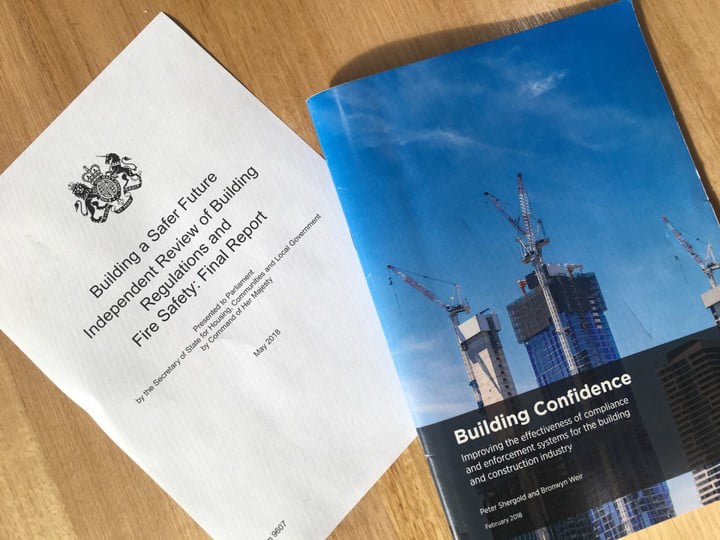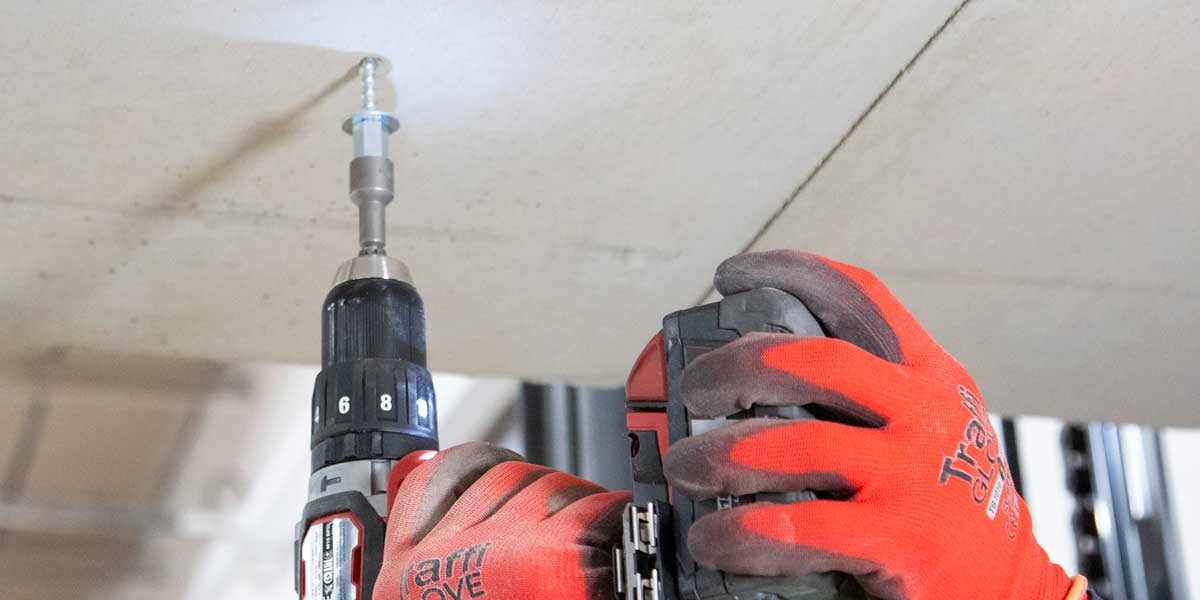Would you start a challenging task that may result in injury, or even death if done incorrectly, without training for it?
I would’ve thought (and hoped!) most of you answered ‘no’. But think again – because such is the case for many anchor installers in the M&E sector.
It’s common for them to be expected to carry out competent anchor installations with little to no training. And while the onus does fall on some of them for simply not caring enough to train, for most, it’s only because they are unaware that they have access to training or that they even need it in the first place. Therefore M&E contractors are responsible for letting the installers know that they need to be competently trained and verifying that they are before starting a project.
But you may be thinking, why go through all that trouble? Is it worth the time, effort, and money? Is it really that important? The answer to these is yes, and hopefully, you’ll agree with me by the end of the article, which will cover:
- Why is it important?
- What does the BS:8539 say about installer training?
- What should an anchor installer training course cover?
- How much does anchor installer training cost?
- Conclusion
Why is it important?
There’s a lot to unpack here, so grab some tea or something.
By now, you will have heard of the Hackitt report – an independent review of building regulations and safety that followed the Grenfell Tower fire and was written by Dame Judith Hackitt. It subsequently prompted an updated Building Safety Act 2022 which recently received Royal Assent this past April.
The report acknowledges that there isn’t a consistent or reliable way to verify the skills and competence of installers and that this is one of the many areas that should be improved upon in the coming years. If successfully done, it would mean workers would be able to correct their errors, prevent them from happening in the first place, boost efficiency and ensure compliance with the regulations, which would ultimately improve overall safety during and after the installations.

Before we get into the nitty-gritty, it’s important to look at the bigger picture here, which is the growing movement towards a safer, more compliant, and traceable future. This will be a drastic but much-needed shift from the sector’s current old-fashioned habits. Rather than trying to do things (in this case, anchor installations) as quickly and cost-effectively as possible, the goal should be to deliver quality support systems, brackets, homes, etc. that are safe for people to live in and/or be around, through safety-conscious procedures.
There are several reasons why it’s particularly important to install anchors properly. Anchors are often neglected until the last minute, and then bought based on price alone, which is the first mistake – the selection of the correct anchor is imperative for an installation to go well. But in any case, it needs to be installed by someone with the ‘requisite competence’ and correct tools.
For starters, the installer himself is the biggest variable during anchor installations, and in fact, the reason for most anchor failures isn’t the anchor but rather the installer’s errors. We know that an anchor will perform well because most of the time, it is ETA-approved. But what we don’t know is how the installer performs nor how qualified they are. Not only that, but without adequate training, it’s much harder to demonstrate that your supports are designed and installed correctly and therefore fit for purpose.

This is made even more difficult with many installers having the mentality that because they’ve always done their installations a certain way and for many years, there’s no way their methods could be wrong (especially if they haven’t failed previously). With a workforce dominated by 40–70-year-olds, there’s a tendency to refuse to let go of ‘tried-and-tested’ methods. This is quite harmful because this is a very long-standing industry, and that naturally comes with outdated practices. It’s nobody’s fault; that’s how we evolve! Plus, the BS:8539 code of practice only came about in 2012, and many workers have been working for well over a decade. However, we should be able to recognise and correct our mistakes when we acquire the means to do so over time.
The next reason is: that anchors are a fundamental part of support systems in that they could result in the failure of the entire system. This happens because when one anchor fails, the other anchors follow as they need to carry more weight, causing a domino effect.

Anchors are also prone to deterioration over long periods, especially if overloaded, and tend to be the weak link in support services (first point of failure). They usually aren’t visible after installation (being covered by the concrete, other services, suspended ceilings, etc.); so if there is potential for it to fail, sometimes there’s no way to predict or see that until it has already happened.
It’s also common in M&E to fix additional supports on a bracket after it has already been installed, adding extra weight to it. This is called piggybacking, or parasitic loading, and is detrimental because it deems the calculated load-bearing capacity of the signed-off original bracket null and void. When this happens, there is added stress on the anchors which, once again, can lead to suspension failure. Instead, a new bracket should be made with a separate load calculation that takes into account the extra load.

I’m sure you’re aware that in this line of work, most installations are overhead and classed as ‘critical applications’ i.e. the failure of anchors can cause risk to human life and/or considerable economic loss. So not only could this lead to injury, and in extreme cases, loss of life - as if this isn’t a big enough risk - it will lead to a damaged reputation and financial loss, regardless of whether there truly was physical harm. Why take the chance? You don’t have anything to lose; certainly nothing as important. The only way to mitigate these risks is by guaranteeing safe, competent, and low-risk installations. Not to mention, feeling confident in your installations and knowing you’re doing your best to combat risks is a great bonus.
What does the BS:8539 say about installer training?
The BS:8539:2012 ‘Code of practice for the selection and installation of post-installed anchors in concrete and masonry’ defines ‘competent’ as “suitably trained and qualified by knowledge and practical experience, and provided with the necessary instructions, to enable the required task(s) to be carried out correctly”.
It says: “The installer should familiarise themselves with the correct installation procedures. Installation of anchors should be undertaken only by installers who have received adequate training from a competent trainer”.
The contractor should verify that the installer is competent, as well as possibly provide training on-site in the setting of the specific anchor used. This could alternatively be done by the supplier/manufacturer. You can’t rely on training from other projects because the installation requirements differ from anchor to anchor. The British Standard also acknowledges that trade associations and some manufacturers offer accessible competent installer training schemes.
Along with competence, the installer needs to have knowledge of the function of the anchor and the consequences of not adhering to installation procedures, i.e., how they work, how they’re installed, and how they’re likely to fail. They must also have adequate experience in installing the particular anchor type. If he doesn’t, he can still install the anchor, provided there is close supervision by the contractor to ensure it’s being done correctly.
Someone who’s competent should also know what to do if something goes wrong e.g. if they strike rebar. Should any conflict arise, they’d refer back to the specifier. They’re also responsible for making sure the correct drilling and setting tools are used during the install, and complying with the manufacturer’s installation instructions and material safety data sheets.

What should an anchor installer training course cover?
Whilst the BS:8539 doesn’t directly indicate what should be included in a training course, the logical conclusion would be that it should at minimum cover the core principles of the standard from a theoretical perspective. It needs to also include application demonstrations (whether it be videos or face-to-face) on how to install different types of anchors such as concrete screws, deformation controlled anchors, and so on, and how it should affect you overall as a contractor/installer/etc.
It should also talk about how to select the right anchor, the responsibilities of the installer, anchor testing, anchor supply, and more. Most importantly, there needs to be some sort of assignment or self-assessment that the user needs to pass in order to obtain the certificate of completion and to prove that they now have the knowledge and experience to be a qualified installer.
How much does anchor installer training cost?
In the absence of a dependable body solely dedicated to installation training/competence, the next best thing is the Construction Fixings Association (CFA) as they have the highest authority within this speciality. They offer both supervisor and installer training courses, underpinned by the BS:8539. However, their courses cost £300 including VAT, and some people may be put off by the upfront cost (although it is an investment in the long run and an essential one). Some manufacturers offer courses for cheaper, but still in line with the BS:8539, as an alternative. We have some at MIDFIX Academy that come with no cost at all.
Conclusion
Considering the substantial reduction in risk of financial loss, reputational damage and physical harm, as well as how easily accessible competence training has become, it really seems like a no-brainer. I hope this article has helped you better understand its significance and motivated you to take what you’ve read into account and implement them with your future installations and training.



